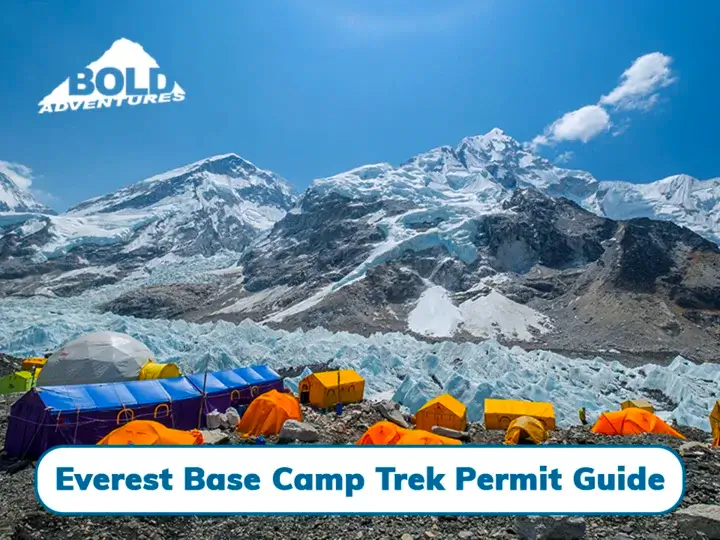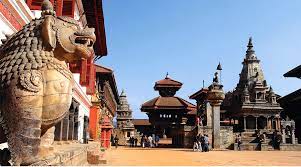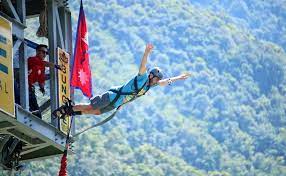Embarking on a journey to the Everest Base Camp is like stepping into a realm where breathtaking natural beauty meets unparalleled adventure.
If you choose to commence your expedition by flying into the legendary Lukla, three Everest base camp trek permits become your trusted companions on this journey.
Every year, adventurers from all corners of the globe come to this majestic region, seeking an extraordinary experience that will leave an indelible mark on their souls. However, before setting foot on this awe-inspiring trail, trekkers must navigate the realm of permits, this ensures their safety and the preservation of this pristine wilderness.
Now, let’s delve into the specifics.
The first is the Sagarmatha National Conservation Area Permit, a key that unlocks the gateway to the renowned Khumbu/ Everest region. It serves as a testament to Nepal’s commitment to preserving the natural treasures that adorn this land.
But that’s not all! The Khumbu Pasang Lhamu Rural Municipality Permit stands as a guardian, watching over the local community and ensuring their welfare. It is a reminder that while we pursue our dreams, we must also respect and support the people who call this land their home.
Ah, the TIMS permit, an essential document that weaves trekkers into the intricate tapestry of safety. It not only provides vital information about those embarking on this remarkable journey but also acts as a thread of connection, linking travelers from different corners of the globe who share a common passion for exploration.
Now, if you decide to take the road less traveled and commence your trek from Jiri or Salleri, an additional permit beckons. The Gaurishankar Conservation Area Permit opens the door to a mesmerizing world, where the magnificence of the Gaurishankar Conservation Area unfolds before your eyes. As you tread upon this sacred land, its beauty and serenity will leave you awe-struck, and humbled by the sheer power of nature.
As you prepare to embark on this extraordinary adventure, keep in mind that obtaining these permits is not just a bureaucratic process; it’s a chance to connect with the heart and soul of Nepal. Remember to embrace the local customs and immerse yourself in the rich cultural tapestry that awaits you. Be prepared with Nepalese currency to honor the land that graciously welcomes you and have your passport details, photos, and filled-out personal detail forms ready. These small details are the foundation upon which unforgettable memories will be built.
So, as you take your first steps into this magical land, let the spirit of exploration guide you, and may the mountains whisper ancient tales of wisdom in your ears. Prepare to be enthralled, as the Everest Base Camp trek invites you to a world where dreams become reality, and ordinary individuals transform into extraordinary adventurers.
Sagarmatha National Conservation Area Permit
“The Sagarmatha National Conservation Area Permit is an essential permit required for all trekkers embarking on the iconic Everest Base Camp trek or entering the Khumbu/Everest region.
This permit is aimed at safeguarding and conserving the natural environment, biodiversity, and cultural heritage of the Sagarmatha National Park. It is issued by the local and central governments of Nepal, ensuring that trekkers respect and preserve the delicate ecosystem of the region.
To obtain this permit, foreign nationals, including SAARC citizens, must provide their passport details, and passport-sized photographs, and complete a personal detail form. The Everest base camp trek permit cost for foreign nationals is set at Rs 3,000, while SAARC nationals are required to pay Rs 1,500.
Whereas the Everest permit cost for Nepali is Rs 100. It’s important to note that payment for the permit must be made in Nepalese currency. The Sagarmatha National Conservation Area Permit can be obtained either at the Nepal Tourism Board Office in Kathmandu or at the Sagarmatha National Park Entry Gate located in Monjo.
While obtaining the permit in Kathmandu allows for smoother processing, trekkers flying into Lukla can also obtain the permit upon arrival. The Everest base camp trek permit serves as a crucial document to enter and explore the protected Sagarmatha National Park, which boasts breathtaking mountain vistas, unique flora and fauna, and rich Sherpa culture.
By obtaining and respecting this permit, trekkers contribute to the conservation efforts and sustainable tourism practices in the region, ensuring its preservation for future generations.”
Khumbu Pasang Lhamhu Rural Municipality Permit
“The Khumbu Pasang Lhamhu Rural Municipality Permit is a mandatory permit required for trekkers visiting the Everest Base Camp or entering the Khumbu region. This permit, previously known as the Khumbu Rural Municipality Permit, is issued by the local government and helps regulate and monitor the movement of trekkers in the area.
The permit fee for foreign nationals is NPR 2,000 for the first four weeks, and after that, it increases to NPR 2,500 per person. For SAARC citizens, the fee remains NPR 2,000. To obtain this permit, trekkers need to provide their passport details and carry their passports along with them.
The permit allows trekkers to explore the Khumbu Pasang Lhamhu Rural Municipality, which encompasses the majestic Everest region, including the iconic Everest Base Camp. It is important to note that the permit fee must be paid in Nepalese currency.
Trekkers flying into Lukla can obtain this permit after arriving in Lukla, while those trekking from Jiri or Salleri can obtain it in Monjo at the Sagarmatha National Park Counter. As an integral part of the permit process, trekkers contribute to the local economy and infrastructure development in the Khumbu region, ensuring a sustainable and enjoyable trekking experience.”
Do We Need A TIMS Card For Everest Base Camp Trekking Too?
No, the new requirement for the Everest Base Camp trek does not include the need for a TIMS (Trekkers’ Information Management System) card. As of October 1st, 2018, the TIMS card has been replaced by the Khumbu Pasang Lhamu Rural Municipality Permit and the Sagarmatha National Park Entry Permit.
These permits have now become mandatory documents for trekkers entering the Everest region. The Khumbu Pasang Lhamu Rural Municipality Permit is obtained by providing passport details and paying the required fee, while the Sagarmatha National Park Entry Permit is also acquired by submitting passport details, passport-sized photographs, and filling out a personal detail form.
The elimination of the TIMS card has streamlined the permit process for Everest Base Camp trekkers. It’s important to note that both permits require payment in Nepalese currency. Trekkers can obtain these permits either in Kathmandu or on the trails, with the Sagarmatha National Park Entry Permit available at the National Park Counter in Monjo.
The new Everest trekking permit requirements aim to enhance safety, security, and conservation efforts in the Everest region, ensuring a well-managed and enjoyable trekking experience for all adventurers. By adhering to these new permit regulations, trekkers contribute to the sustainable development and preservation of the Everest region’s natural and cultural treasures.
Other Permits Required For The Everest Base Camp Trek
Apart from the Sagarmatha National Conservation Area Permit and the Khumbu Pasang Lhamhu Rural Municipality Permit, there are additional permits required for certain routes or entry points for the Everest Base Camp trek.
If trekkers choose to embark on the trek from Jiri or Salleri, they will need to obtain the Gaurishankar Conservation Area Permit. This permit allows trekkers to enter the Gaurishankar Conservation Area, which is part of the trekking route to the Everest Base Camp.
The Gaurishankar Conservation Area Permit can be obtained in Kathmandu at the Nepal Tourism Board Office. The fee for this permit is Rs 3,000 for both foreign nationals and SAARC nationals, and trekkers are required to provide their passport details along with a completed personal detail form.
It is crucial to carry a clear copy of the passport, passport-sized photographs, and the required fee in Nepalese currency when applying for an Everest base camp trek permit. By obtaining the necessary permits, trekkers can comply with the regulations in place and enjoy a well-planned and authorized journey to the Everest Base Camp, while also supporting conservation efforts in the protected areas along the trekking route.
What Are The Documents Required To Obtain The Permits For The Everest Base Camp Trek?
To obtain the necessary permits for the Everest Base Camp trek, trekkers must ensure they have the required documents ready. The primary document needed is a valid passport with a clear copy that includes personal details. Additionally, trekkers are usually required to provide passport-sized photographs for permit applications.
Depending on the specific permits, trekkers may need to fill out personal detail forms, which include basic information such as name, address, nationality, and emergency contact details. For the Sagarmatha National Conservation Area Permit, trekkers are required to pay a fee of Rs 3,000 for foreign nationals, Rs 1,500 for SAARC nationals, and Rs 100 for Nepali citizens.
The Khumbu Pasang Lhamhu Rural Municipality Permit carries a fee of Rs 2,000 for the first four weeks for foreign nationals, increasing to Rs 2,500 thereafter. SAARC nationals pay Rs 2,000, while Nepali citizens are charged a nominal fee. It is important to note that all permit fees must be paid in Nepalese currency.
Trekkers can obtain the necessary permits either in Kathmandu or along the trekking route. In Kathmandu, permits can be acquired at the Nepal Tourism Board Office, while in Lukla or Monjo, trekkers can obtain the permits at the respective entry gates or local counters. Also, Be sure not to miss out on the Everest base camp trek Insurance.
By ensuring they have the correct documents and fees ready, trekkers can smoothly navigate the permit application process and embark on their unforgettable journey to the Everest Base Camp.
Conclusion
In conclusion, obtaining the necessary permits for the Everest Base Camp trek is essential for ensuring a safe, regulated, and memorable experience. The Sagarmatha National Conservation Area Permit, Khumbu Pasang Lhamhu Rural Municipality Permit, and TIMS card (previously required) have been put in place to protect the natural environment, preserve the cultural heritage, and manage the flow of trekkers in the region.
These permits can be obtained in Kathmandu or at entry points along the trekking route, with the required documents including a valid passport, passport-sized photographs, and completed personal detail forms.
By complying with these permit regulations, trekkers not only contribute to conservation efforts and sustainable tourism practices but also support the local economy and infrastructure development in the Everest region.
So, gear up, prepare with the help of the Everest Base Trek Packing List, and embark on an incredible adventure to the Everest Base Camp, where awe-inspiring landscapes and the warm Sherpa culture await.
Also, Read:
Everest Base Camp Trek distance




